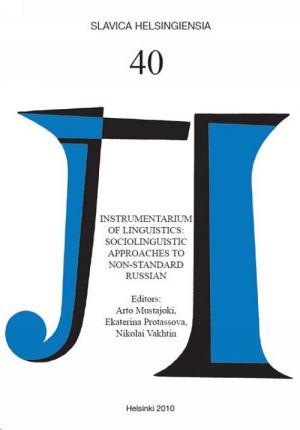The dissemination of the Russian language in the world has taken place over the centuries, leading to the appearance of both permanent and ephemeral varieties of Russian speech affected by language contact and language mixing. In today's situation, regional varieties of non-standard Russian are mainly studied from a sociolinguistic point of view, but ethnographic, psycholinguistic, and discourse analytic methods are used as well. The present collection of articles is an attempt to uncover the mechanisms of language contact in its historical and synchronic aspects, in Russia, the CIS, and 'the far abroad'.
Slavica Helsingiensia,
published by the Department of Languages at Helsinki University, was founded in 1983. The series includes monographs and collections of articles on linguistic and literary topics.The majority of the doctoral theses prepared in the Department in the field of Slavic languages and literatures have appeared in the series. A certain number of volumes, bearing the sub-heading Studia Russica Helsingiensia at Tartuensia, contain materials from conferences on Russian literature jointly organized by the Universities of Helsinki and Tartu. Further details on the contents of each volume may be found on the website of the series.
Распространение русского языка в мире происходило на протяжении веков, вызывая появление контактных и смешанных разновидностей русской речи, устойчивых или преходящих. В современной ситуации региональные варианты нестандартного русского изучаются прежде всего социолингвистическими, но также этнографическими, психолингвистическими, дискурс-аналитическими методами. Настоящий сборник представляет собой попытку вскрыть механизмы языкового контакта в историческом и синхронном плане, как на территории России и стран СНГ, так и в дальнем зарубежье.
Rasprostranenie russkogo jazyka v mire proiskhodilo na protjazhenii vekov, vyzyvaja pojavlenie kontaktnykh i smeshannykh raznovidnostej russkoj rechi, ustojchivykh ili prekhodjaschikh. V sovremennoj situatsii regionalnye varianty nestandartnogo russkogo izuchajutsja prezhde vsego sotsiolingvisticheskimi, no takzhe etnograficheskimi, psikholingvisticheskimi, diskurs-analiticheskimi metodami. Nastojaschij sbornik predstavljaet soboj popytku vskryt mekhanizmy jazykovogo kontakta v istoricheskom i sinkhronnom plane, kak na territorii Rossii i stran SNG, tak i v dalnem zarubezhe.













